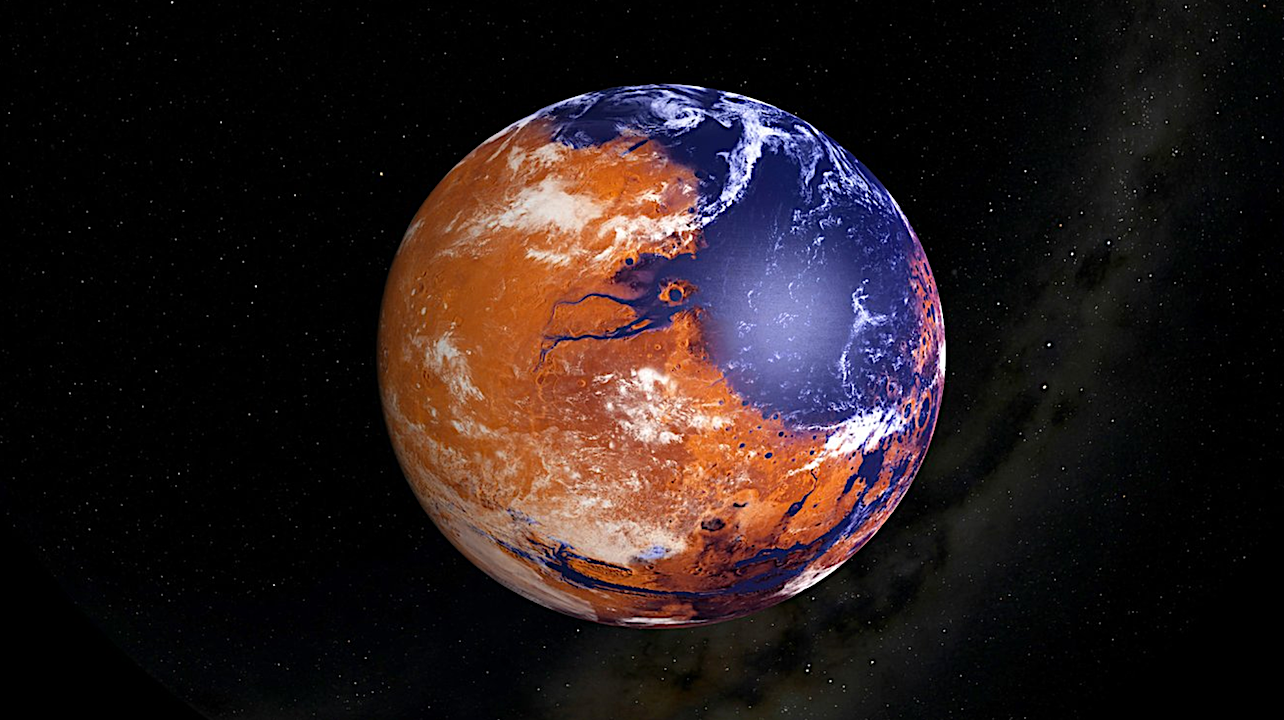New Insights Into How Mars Became Uninhabitable

NASA’s Curiosity rover, currently exploring Gale Crater on Mars, is providing new details about how the ancient Martian climate went from potentially suitable for life — with evidence for widespread liquid water on the surface — to a surface that is inhospitable to terrestrial life as we know it.
Although the surface of Mars is frigid and hostile to life today, NASA’s robotic explorers at Mars are searching for clues as to whether it could have supported life in the distant past. Researchers used instruments on board Curiosity to measure the isotopic composition of carbon-rich minerals (carbonates) found in Gale Crater and discovered new insights into how the Red Planet’s ancient climate transformed.
“The isotope values of these carbonates point toward extreme amounts of evaporation, suggesting that these carbonates likely formed in a climate that could only support transient liquid water,” said David Burtt of NASA’s Goddard Space Flight Center in Greenbelt, Maryland, and lead author of a paper describing this research published Oct. 7 in the Proceedings of the National Academy of Sciences. “Our samples are not consistent with an ancient environment with life (biosphere) on the surface of Mars, although this does not rule out the possibility of an underground biosphere or a surface biosphere that began and ended before these carbonates formed.”
Isotopes are versions of an element with different masses. As water evaporates, light versions of carbon and oxygen were more likely to escape into the atmosphere, while the heavy versions were left behind more often, accumulating into higher abundances and, in this case, eventually being incorporated into the carbonate rocks. Scientists are interested in carbonates because of their proven ability to act as climate records. These minerals can retain signatures of the environments in which they formed, including the temperature and acidity of the water, and the composition of the water and the atmosphere.
The paper proposes two formation mechanisms for carbonates found at Gale. In the first scenario, carbonates are formed through a series of wet-dry cycles within Gale Crater. In the second, carbonates are formed in very salty water under cold, ice-forming (cryogenic) conditions in Gale Crater.
“These formation mechanisms represent two different climate regimes that may present different habitability scenarios,” said Jennifer Stern of NASA Goddard, a co-author of the paper. “Wet-dry cycling would indicate alternation between more habitable and less habitable environments, while cryogenic temperatures in the mid-latitudes of Mars would indicate a less habitable environment where most water is locked up in ice and not available for chemistry or biology, and what is there is extremely salty and unpleasant for life.”
These climate scenarios for ancient Mars have been proposed before, based on the presence of certain minerals, global-scale modeling, and the identification of rock formations. This result is the first to add isotopic evidence from rock samples in support of the scenarios.
The heavy isotope values in the Martian carbonates are significantly higher than what’s seen on Earth for carbonate minerals and are the heaviest carbon and oxygen isotope values recorded for any Mars materials. In fact, according to the team, both the wet-dry and the cold-salty climates are required to form carbonates that are so enriched in heavy carbon and oxygen.
“The fact that these carbon and oxygen isotope values are higher than anything else measured on Earth or Mars points towards a process (or processes) being taken to an extreme,” said Burtt. “While evaporation can cause significant oxygen isotope changes on Earth, the changes measured in this study were two to three times larger. This means two things: 1) there was an extreme degree of evaporation driving these isotope values to be so heavy, and 2) these heavier values were preserved so any processes that would create lighter isotope values must have been significantly smaller in magnitude.”
This discovery was made using the Sample Analysis at Mars (SAM) and Tunable Laser Spectrometer (TLS) instruments aboard the Curiosity rover. SAM heats samples up to nearly 1,652 degrees Fahrenheit (almost 900 degrees Celsius) and then the TLS is used to analyze the gases that are produced during that heating phase.
Funding for this work came from NASA’s Mars Exploration Program through the Mars Science Laboratory project. Curiosity was built by NASA’s Jet Propulsion Laboratory, which is managed by Caltech in Pasadena, California. JPL leads the mission on behalf of NASA’s Science Mission Directorate in Washington. NASA Goddard built the SAM instrument, which is a miniaturized scientific laboratory that includes three different instruments for analyzing chemistry, including the TLS, plus mechanisms for handling and processing samples.
Astrobiology








